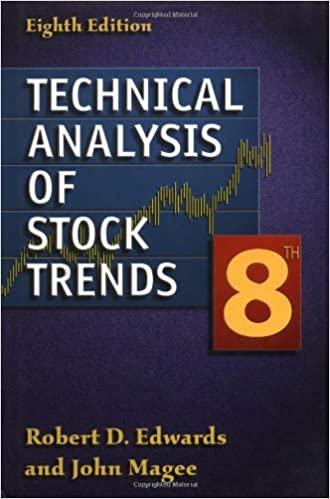3. Properties of the Tangency portfolio When risk-averse investors have access to a risk-free asset, as well as a set of risky assets, we have demonstrated that the efficient frontier is a straight line, linking the risk -free asset with the tangency portfolio (T). All frontier portfolios are simply combinations of the risk-free asset and T. (a) Suppose an investor holds risky-assets in the proportions dictated by the tangency portfolio. He chooses to change his allocation so as to increase the weight of risky-asset K and simultaneously to reduce the weight on the risk-free asset by the same amount. Compute the change in his expected return and portfolio return variance. Denote the risk-free return by rf and the return on the tangency portfolio with rT (b) Use your result from (a) to argue that, in situations where an investor is holding a portfolio of stock, the risk of any single asset is determined by the covariance of its return and the return on the portfolio. (c) Define the Bang for the Buck ratio as the ratio of the change in expected return to the change in return variance that you computed in part (a). This ratio tells you how much extra return kick an investor receives per extra unit of risk taken on. Argue that, for an investor currently holding risky assets in the proportions dictated by the tangency portfolio, the bang for buck ratio must be the same for every risky asset. 3. Properties of the Tangency portfolio When risk-averse investors have access to a risk-free asset, as well as a set of risky assets, we have demonstrated that the efficient frontier is a straight line, linking the risk -free asset with the tangency portfolio (T). All frontier portfolios are simply combinations of the risk-free asset and T. (a) Suppose an investor holds risky-assets in the proportions dictated by the tangency portfolio. He chooses to change his allocation so as to increase the weight of risky-asset K and simultaneously to reduce the weight on the risk-free asset by the same amount. Compute the change in his expected return and portfolio return variance. Denote the risk-free return by rf and the return on the tangency portfolio with rT (b) Use your result from (a) to argue that, in situations where an investor is holding a portfolio of stock, the risk of any single asset is determined by the covariance of its return and the return on the portfolio. (c) Define the Bang for the Buck ratio as the ratio of the change in expected return to the change in return variance that you computed in part (a). This ratio tells you how much extra return kick an investor receives per extra unit of risk taken on. Argue that, for an investor currently holding risky assets in the proportions dictated by the tangency portfolio, the bang for buck ratio must be the same for every risky asset







